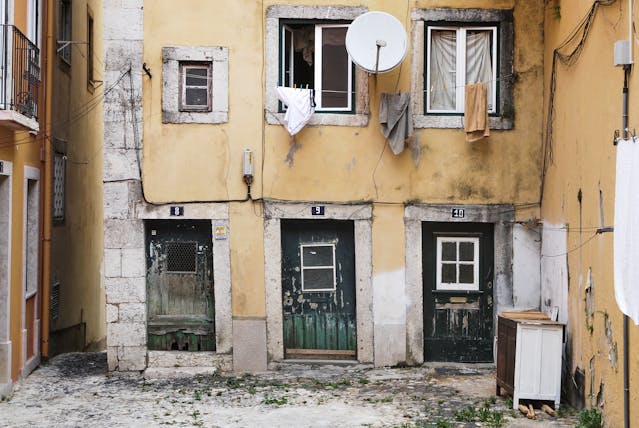Renovating Older Homes: Preserving Charm While Updating for Modern Living
Renovating an older home is a rewarding project that blends the beauty of historical charm with the convenience of modern amenities. Whether you're restoring a Victorian-era house or updating a mid-century bungalow, striking the right balance between preserving the home's unique character and adapting it for today’s lifestyle can be challenging. Here’s how you can approach this renovation project to create a living space that honors the past while embracing the present.

Assessing the Structure and Foundation
Before diving into aesthetic changes, it’s important to ensure that the home is structurally sound.
Key Areas to Inspect
-
Foundation: Check for any cracks, moisture, or signs of settling that might need professional attention.
-
Roofing and Walls: Inspect the roof for damage, and make sure the walls are free from leaks or mold.
-
Plumbing and Wiring: Older homes may have outdated systems that need to be upgraded to meet current codes and ensure safety.
A thorough inspection will ensure that your home is stable and safe for renovation work to begin.
Embracing the Home’s Unique Features
Older homes often have distinctive architectural elements that give them character and charm. These features should be preserved and highlighted whenever possible.
What to Keep
-
Original Flooring: Hardwood floors, particularly those made of oak, pine, or maple, are valuable and can often be refinished.
-
Architectural Details: Crown molding, built-in bookshelves, or antique light fixtures can enhance the home’s character.
-
Fireplaces: If intact, fireplaces can be restored to add warmth and style to the space.
These features connect the home to its history and contribute to its unique personality.
Modernizing with Care
Updating an older home means integrating modern systems and conveniences without compromising its aesthetic.
Upgrades to Consider
-
Energy Efficiency: Install energy-efficient windows, insulation, and appliances to make the home more eco-friendly and cost-effective.
-
Kitchen and Bathrooms: While it’s tempting to gut and replace everything, consider updating just the fixtures or adding modern touches like a sleek countertop or updated cabinetry.
-
Open Floor Plan: Many older homes have smaller, compartmentalized rooms. If possible, consider removing non-load-bearing walls to create a more open, flowing space.
Modern amenities like smart thermostats, high-efficiency lighting, and updated plumbing should be carefully integrated to ensure they fit with the home’s overall feel.
Respecting the Home’s Historic Integrity
While it’s essential to update the home, it’s just as important to preserve its historical value.
How to Respect History
-
Keep Original Facades: Try to maintain the original exterior materials, such as brick, stone, or wood siding, and avoid making drastic changes to the home’s front view.
-
Restoring Vintage Windows: If the windows are original, consider restoring them rather than replacing them, which can preserve the architectural style.
-
Research and Recreate: If any details are missing, research the home’s history and try to recreate original fixtures, doors, or trim that match the era.
Preserving these elements helps maintain the home’s authenticity while making it livable in the modern world.
Incorporating Sustainable Practices
Older homes were not built with modern sustainability in mind, but you can make environmentally conscious choices during your renovation.
Sustainable Renovation Ideas
-
Repurpose Materials: Salvage old wood, windows, and tiles to use in other parts of the house or in new construction.
-
Energy-Efficient Windows: Replace old, drafty windows with energy-efficient options that maintain the aesthetic.
-
Green Roofs or Solar Panels: Consider installing solar panels or adding a green roof to increase the home’s energy independence and sustainability.
Incorporating green practices will not only improve the home’s environmental impact but also lower long-term energy costs.
Balancing Old and New Decor
Interior design plays a significant role in blending modern elements with historic charm.
Decorating Tips
-
Mix Modern and Vintage: Pair contemporary furniture with vintage accents, such as antique rugs or retro light fixtures, to create a balanced atmosphere.
-
Color Scheme: While it’s tempting to go bold with bright, modern colors, neutrals and warm tones often work better in older homes, preserving their character while allowing modern touches to shine.
-
Art and Accessories: Use modern art, decor, and textiles to complement the traditional elements of the home, creating a dynamic and stylish space.
The goal is to allow both the old and the new to coexist harmoniously, offering comfort, functionality, and beauty.

Budgeting for a Renovation
Renovating an older home can be a significant investment, so creating a realistic budget is key.
Budgeting Tips
-
Prioritize Needs vs. Wants: Focus on essential structural repairs first before moving on to cosmetic upgrades.
-
Factor in Hidden Costs: Older homes often reveal hidden issues, such as mold, wiring issues, or plumbing problems, which should be anticipated in your budget.
-
DIY vs. Professional Help: While DIY projects can save money, some tasks, such as electrical or structural work, should be left to the professionals to ensure safety and quality.
A detailed, well-planned budget will help you stay on track and avoid unexpected costs during the renovation.
Conclusion: Creating a Timeless Home
Renovating an older home requires a balance of preserving its historical charm and making it livable for modern needs. By respecting the home’s unique features, integrating sustainable practices, and carefully modernizing the space, you can create a beautiful, functional home that honors its past while embracing the future.
With thoughtful planning and a clear vision, an older home can be transformed into a timeless space that suits your lifestyle for years to come.












